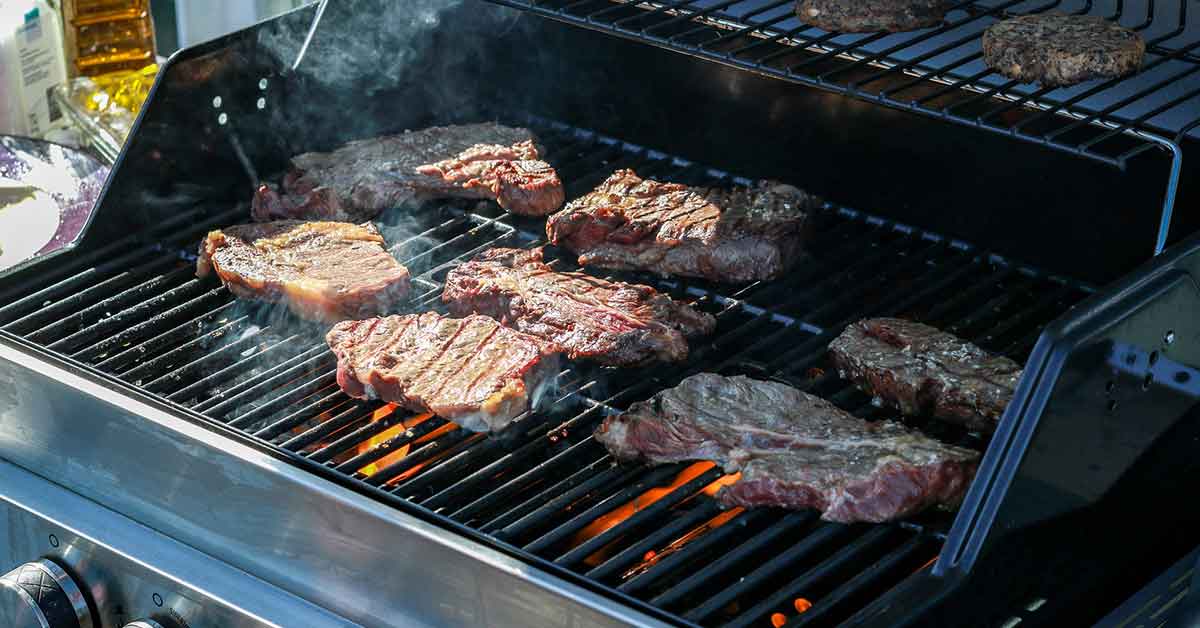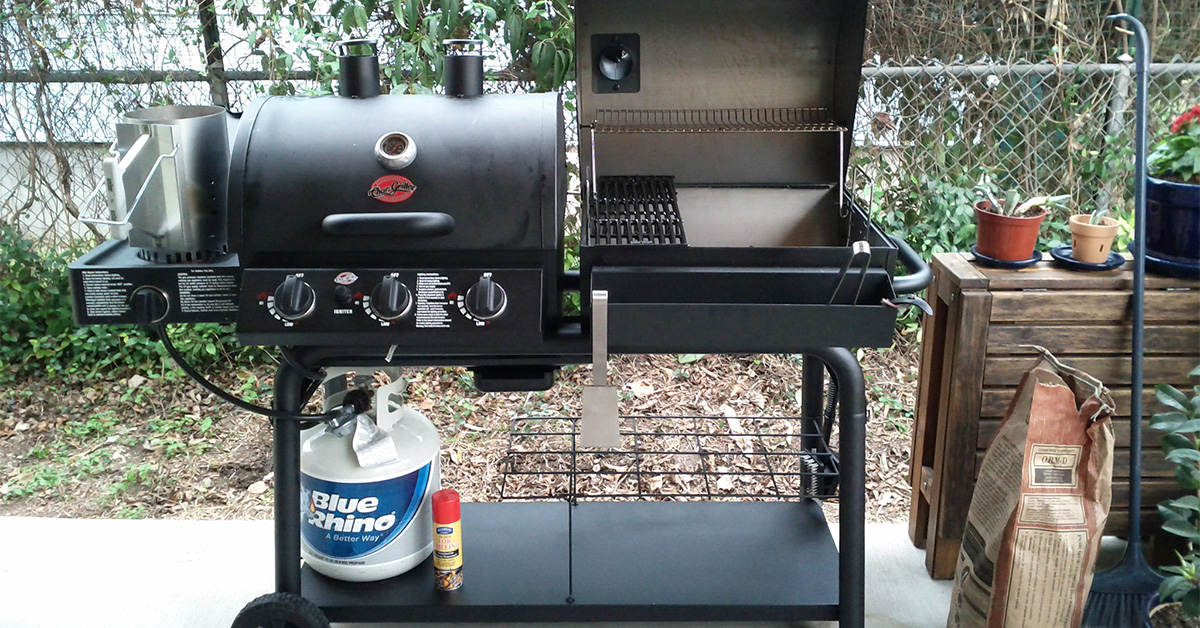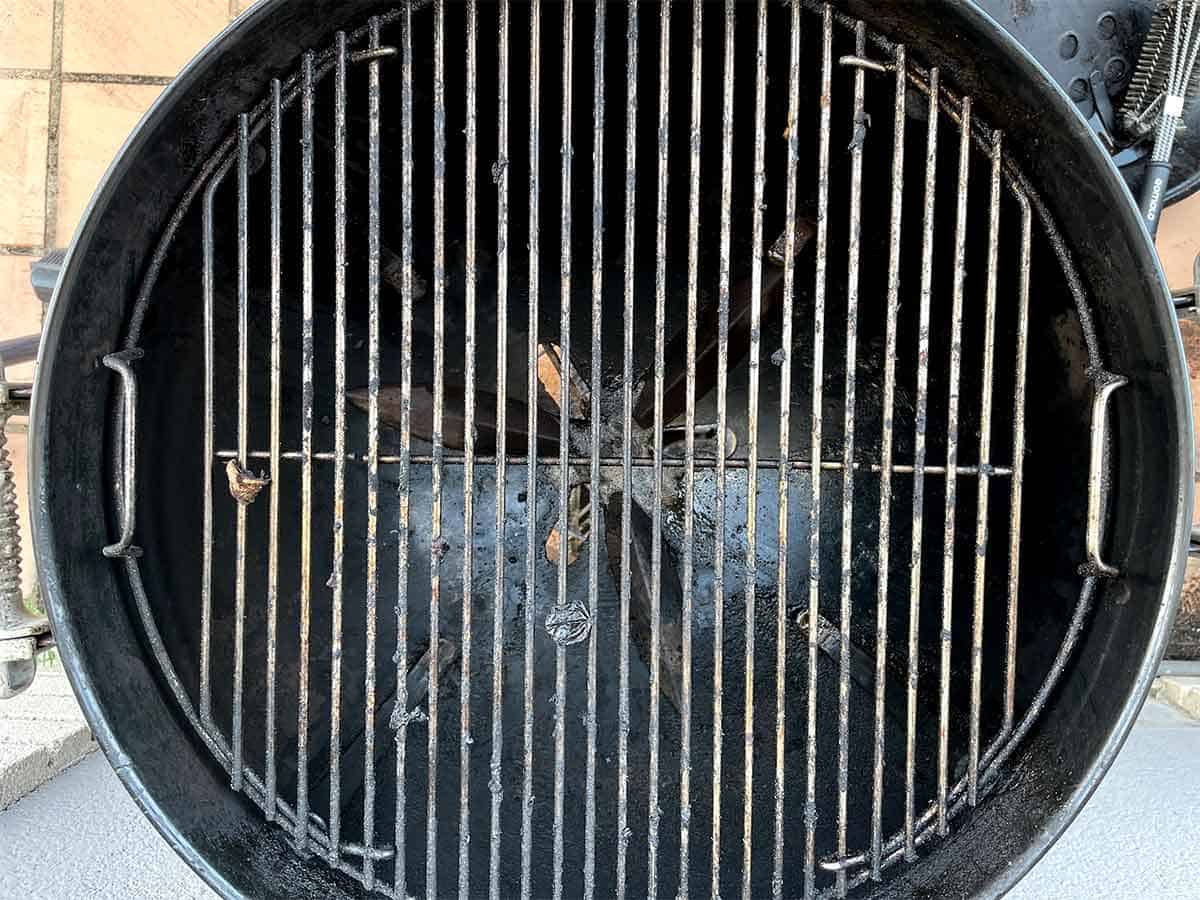A Helpful Guide to All the Best Foods to Smoke
When you think of barbecuing, one thing comes to mind immediately: that smoky flavor. One of the best bits about barbecuing is the rich, smoky taste you can impart on your food. We typically think of smoking meats, but this flavor can work well with so many different foods, from cheese, to shellfish, nuts, olives, capers… the list goes on! However, you could be getting a lot more from your smoke, and in this helpful guide, we’ll cover all you need to know about smoking and all the best foods to smoke.
Smoking Basics
First, let’s cover the basics of smoking food. There are a few things you can do which will take your smoking game to the next level, which we’ll cover below.
Temperature and Heat
Firstly, we need to think about the temperature. For smoking foods, we’re typically looking for a low, indirect heat – usually under 250 degrees Fahrenheit. How low you should go depends on whether you want the food to actually cook (like with scallops or oysters), or if you’re just looking to soften the food slightly so it can absorb the smoke.
Controlling the Smoke
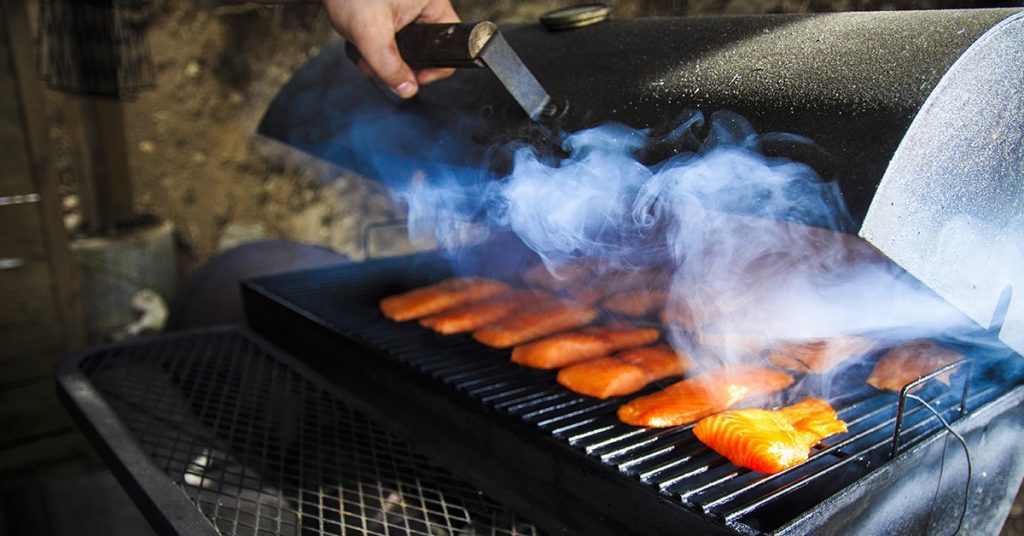
Of course, the amount of smoke you produce will depend on the amount of woodchips you use. You can use more or less woodchips to adjust your smoke depending on what you’re smoking. Foods that absorb food readily will need fewer woodchips. On the other hand, food with longer cooking times or anything that could act as a barrier to the smoke, such as skin or shells, will need more chips.
Either way, you should always soak your woodchips for at least half an hour before smoking with them – otherwise, rather than smoldering and smoking, they’ll just burn. Just make sure to drain them before using!
Smoking Meats
It’s not as simple as one setting for all meats. There are three broad categories when you want to smoke meat. The first is tough cuts, which should be cooked low and slow to get as smoky as possible. In fact, the smoke actually helps to tenderize tough cuts!
Tender cuts, like fish, tenderloins, and turkey, are great at picking up that smoky flavor, so they won’t need to be smoked for quite so long.
Finally, fatty cuts are perfect for smoking too. The fat will melt as the food cooks and any tough connective tissues will break down, resulting in a tender, smoky and almost melt-in-the-mouth bite![1]
Smoking Melt-Prone Ingredients
Some ingredients, like cheese, taste absolutely incredible when smoked. However, as you’re probably aware from burgers or even a grilled cheese, cheese likes to melt! Other ingredients, such as flaky fish are prone to falling apart too. For these ingredients, you might want to think about a technique called cold smoking.
The Different Types of Dedicated Smokers
The most effective way to smoke is with a dedicated smoker. There are a range of different types, suiting different skill levels and budgets.
Propane Gas Smokers
Most propane gas smokers are upright cabinet-style models, with the burner and vents at the bottom, and chimney at the top. As they use flavorless propane gas, you’ll need to add woodchips of your choice to add that smoky flavor.
Gas smokers are simple to use as you have direct control over the temperature at the touch of a dial, and its faster and easier to create changes of heat compared to charcoal or pellet smokers. They are also easier to clean, and you can also get them up and running much faster, in just 15 minutes or so.
Electric Smokers
Electric smokers are the best option for grillers who want to ‘set and forget’ their smokers. Most electric smokers require you to simply specify a temperature and time, and then you’re good to go! Some models are so hi-tech that you can do all this via Bluetooth with an app on your phone.
Electric smokers use a heating element – this is good news for environmentally conscious smokers, as no combustible heat source is used apart from the woodchips you need to add a smoky flavor.
Electric smokers are easy to use and quick to clean, so could be a perfect choice for a beginner smoker, or anyone who doesn’t want to babysit their grill. Despite the sometimes-high entry costs, you’ll also save over time, as you won’t need to keep stocking up on charcoal, gas, or pellets. However, the flavor obtained from electric smokers can often be different from other smokers, as there is no combustion in the cooking process and the woodchips will smoke at a lower temperature than other grills.
Charcoal Smokers
Charcoal smokers can come in all shapes and sizes, and be as complex or as simple as you like. Some are as simple as an upright oil drum, whilst others are more hi-tech with temperature gauges, multiple levels and heat zones, dampers, and other attachments. This makes it easier to cater for your experience level, as well as make the best use of space in your yard.
Charcoal smokers are fueled by charcoal in either lumpwood or briquette form. Charcoal grills are thought of as the ‘most authentic’ smoking method, as charcoal releases compounds that add to the taste of the fod you’re smoking. In fact, the nitrogen oxide it releases when burning is essential to achieving a perfect smoke ring.[2] However, charcoal grills require a fair bit more attention, setup time and cleaning than an electric or gas smoker.
Kamado grills
With a 3,000-year history, kamado grills are a type of charcoal-fueled grill/smoker hybrid from China, further refined in Japan.[3] Their ceramic construction ensures excellent insulation, perfect for smoking. Due to the fact that they are fueled by charcoal, you can also get the traditional grilling experience from a kamado grill, and they’re also great for pizzas too.

However, the best kamado grills can be quite expensive – not great for the barbecuer on a budget. Other types of grill/smoker combos might be more your style.
Offset Smokers
A dream piece of kit for most pitmasters, offset smokers are huge and hard to master, but if you’re dedicated they can be extremely rewarding. Wood is burnt in a firebox offset from the main smoker and then drawn across the food inside the smoker and out of a chimney opposite.
Due to their size, offset smokers let you cook huge cuts of meat or lots of smaller cuts at once. Another pro is that you don’t need to open the smoker and let out heat and smoke when you want to refuel, because the firebox is offset from the smoker. However, offset smokers are not for the casual griller. As well as taking at least an hour to even heat up, you’ll need to stick around to tend to your offset smoker, alongside putting in the hours of practice required to master it.
Pellet Smokers
Pellet smokers are versatile devices that can be used for grilling, smoking and oven-style cooking. They combine the ease of an electric smoker with the flavor you get from combustion when using a charcoal or offset smoker.
To use a pellet smoker, load the smoker on the side with pellets (made from compressed sawdust), then set the temperature you want. A spiral-shaped drill auger will feed the pellets through to the firebox to be heated by a metal rod, causing them to combust and smoke. The built-in thermometers will adjust the drill speed and airflow to keep the temperature constant.
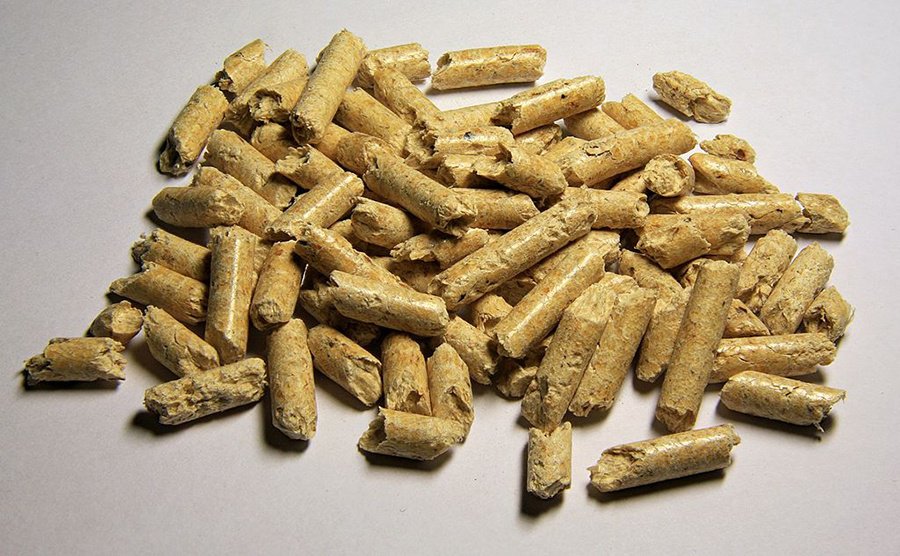
Pellet smokers are easy to use like electric smokers, but don’t lose out on the flavor benefits you get from using charcoal. The wood pellets burn down to almost nothing too, so cleanup is easier than charcoal grills. However, they tend to run pretty expensive! Pellets are also much harder to find than gas or charcoal, so it’s also worth making sure you have a decent supply.
How to Smoke on a Conventional Grill
If you don’t have a dedicated smoker, you can still smoke on a conventional gas or charcoal grill. In this section, we’ll cover how.
Charcoal Grills
For charcoal grills, start by getting your grill going with a chimney starter full of charcoal lumps or briquettes, and burn until the edges are looking suitably ashy. Then spread the coals over half of the charcoal grate. (for a cold smoke, ignite half a chimney instead – you’ll only need three or four coals). Close the grill lid and let the coals burn down to the desired temperature. You can check by sticking a probe thermometer into the air vent if your grill doesn’t have a built-in thermometer. Then, when you’ve hit the temperature you’re looking for, scatter your wood chips over the coals. You’re ready to smoke!

Gas Grills
For gas grills, ignite one of the burners and shut the lid. Let the grill heat to temperature, then add your wood chips. Some grills have a built-in smoker box, so if you’ve got one, just pop your chips in. If not, you can get a hold of a smoker box for your grill, or if you’re in a pinch, just wrap your chips in some foil and poke some holes through the top to let the smoke out. You can place this foil packet under the grate, directly onto the lit burner.
The next steps
Once the chips are smoking, put the food on the section of the grill that doesn’t have coals or a lit burner under it. Larger items can go directly on the grate, and smaller items can go on a perforated grill pan to ensure nothing falls through the grate. Anything even smaller can go on a metal pie plate (or you can fashion your own from tin foil again!). Then just cover the grill and smoke away!
The Best Foods to Smoke and How to Smoke Them

Now you know how to smoke, it’s time to decide what you’ll be smoking. So many foods can benefit from the addition of a smoky flavor. We’re willing to bet that even an experienced pit master might find something below that they haven’t tried yet!
Poultry
Let’s start with a classic: poultry. As well as tasting delicious, poultry such as chicken can be the perfect food to hone your smoking skills, offering you a cost-effective practice option. For poultry, you can’t go wrong with applewood chips, but feel free to experiment and see what works for you!
Whole Hens
If you’re looking to hone your smoking skills and want a cost-effective way to make the most of your meat, smoking whole hens could be a good idea.
Whole hens will stay moist while they smoke, and as they’re only small, they smoke relatively quickly – about an hour to an hour and a half at 375 degrees Fahrenheit.
Firstly, remove the gizzards and neck, then season and smoke to your liking. It’s as simple as that! Be sure to check the internal temperature of each bird you smoke before eating – you’re looking for 165 degrees Fahrenheit.
You can also rinse and dry your hen, and then put it in the refrigerator for a few hours up to a day before smoking. This dries out the skin, resulting in a better finished product. Don’t fret though, it’ll taste delicious either way.
Chicken Quarters
Chicken quarters are another economical way of cooking your whole chicken. As Bryant Kryck, chef at Alto Bajo in Portland, Oregon states,
“Chicken thighs and dark meat take up more of that smoky flavor, and I don’t have to worry about the smoke drying out the chicken as much,”[4]
For chicken quarters, the larger portions of dark meat are perfect for smoking, and the cut helps to lock in flavor.
Apply your favorite rub or sauce, then refrigerate for at least an hour. Preheat your smoker to 225 degrees Fahrenheit. To maximize flavor, you can pan-sear your quarters quickly. Once your smoker is heated, add your quarters, skin side up and smoke them for around four hours. An internal temperature of 165 degrees Fahrenheit is safe to eat, but you can go up to 185 to 190 degrees for even more tenderness.
Chicken Wings
Chicken wings aren’t traditionally smoked, but they can work pretty well if done properly.
An important first step is to apply your favorite rub or sauce and let the wings rest in the refrigerator for at least an hour, so that the flavors can be absorbed properly. Then when you’re ready, smoke at 225-250 degrees Fahrenheit for between two and two and a half hours over hickory, or pecan if you want a slightly milder smoke (more on this later). Check the wings regularly coming up to two hours, you’re looking for an internal temperature of 165 degrees Fahrenheit, but again you can go a little higher for a more tender result.
Beef
Beef is a true barbecue staple. Burgers and steaks crop up at most backyard barbecues, and can be absolutely delicious if grilled properly. But by smoking beef, you can take it to the next level. You’re looking at bigger, higher quality and more expensive cuts, but think of it as an investment, as smoking will truly bring out the best in these cuts.
Brisket
The brisket is the king of smoked meats. The very thick fatty layer helps it to maintain moisture, and longer cooking times can help it absorb a great smoky flavor. When done properly, a well-smoked brisket can give you a great smoke ring – the hallmark of a great barbecue.
Look out for fattier cuts around 10 to 15 lbs, rather than a leaner cut. This will provide more flavor and keep your brisket from drying out.
Prime Rib
The prime rib can taste great when done well, however, it can be harder to smoke. We’d recommend ensuring you’re comfortable smoking consistently before you give it a try!
You should start by covering your prime rib with salt and wrapping with saran wrap, then and refrigerating for 4 to 24 hours. Then, cover your rib in a marinade of your choice, and refrigerate for a further 1 to 12 hours.
Now we’re ready to start smoking. Start by preheating your smoker to 225 degrees Fahrenheit, and add your wood chips (we like pecan, or hickory if you want a stronger smoke). Smoke until the internal temperature of your rib is at 145 degrees Fahrenheit. This should take 3 to 4 hours. For the final 15 to 20 minutes, move the rib to an oven at 550 degrees Fahrenheit. This should form a beautiful crust on your rib. Let the rib rest for 10 to 15 minutes, and then tuck in! It might take some time, but the result is well worth the effort.
Pork
If you’re feeling more adventurous, it might be time to move onto pork. Smoking pork can be a bit more involved than smoking chicken or your typical beef barbecue staples like steaks and burgers. But there’s a reason that mouths start to water at the mention of smoky, pulled pork or sticky ribs.
Pork Shoulder
The pork shoulder, or ‘Boston Butt’, is another smoking favorite. The fat content is just right, so the pork shoulder will baste itself as the fat renders in the grill heat, creating gorgeously tender meat. The shoulder is also fairly forgiving, so you can’t go too far wrong! For beginners looking to impress, the pork shoulder can be a great choice.
If you’re using a flavor rub (which we highly recommend!) you’ll want to apply this to the shoulder at least 12 hours before you want to start smoking. This should give the pork time to absorb the flavors in the refrigerator. Just remember to remove it an hour or so before you want to start smoking.
Preheat your smoker or grill to 250 degrees Fahrenheit, then add your pork shoulder. Monitor the internal temperature of the thickest part of the shoulder and remove from the heat when it reaches 195 to 205 degrees Fahrenheit. The cook time for pork shoulder is around 90 minutes per pound, so you can calculate roughly how long you’ll be smoking for in advance.
Once you reach the right internal temperature, remove the shoulder and wrap it in aluminum foil, and let it rest for an hour. In this time, the pork will continue to cook, and also gives the juices time to redistribute.[5]
Pork Ribs
Pork ribs are another smoking classic. Popular wood choices for ribs are hickory and mesquite, so they might be a good place to start. We like to combine mesquite with a fruit wood, to reduce bitterness and create a more complex smoky flavor. Don’t be afraid to experiment!
The most reliable way to get perfect smoky pork ribs is using the 3-2-1 method. This works best for two or three racks of ribs – for one or two smaller racks, 2-2-1 works just fine.
Firstly, smoke the ribs directly on the racks for 3 hours, at 225 degrees Fahrenheit. Remove from the grill, and wrap the ribs tightly with aluminum foil, after adding about an 1/8 cup of liquid flavor enhancer – this can be beer, apple juice, wine, anything you can think of! This will help to tenderize the ribs as the liquid steams. Then, put the wrapped ribs back on the grill for 2 more hours. This technique is described by four-time World Barbecue Champion, television host and operator of Myron Mixon’s Pitmaster Barbecue in Virginia, Myron Mixon:
“The most common technique to smoke meat faster is wrapping it in foil. This is done after the protein has absorbed adequate smoke and caramelization has taken place on the outside. Generally a liquid such as water or apple juice is placed in the foil with the meat and wrapped tightly. The steaming effect from the liquid speeds up the cooking process.”[6]
Then remove the ribs, coat generously with barbecue sauce, and pop them directly on the racks again for another hour. Perfect pork ribs are a labor of love, but the taste makes them worth it every time.
Sticky Chinese BBQ Pork
Sweet and sticky barbecue pork, also known as char siu, is a nice twist on the classic American smoked pork.
Start off by slicing your pork into strips about 3 inches thick. This will allow them to cook faster, and absorb more of the gorgeous marinade. To make the marinade, combine two tablespoons molasses, hoisin sauce, and rice wine. Then add one tablespoon of red fermented tofu and two tablespoons tofu liquid, a tablespoon of chili flakes, two teaspoons of Chinese five spice, two cloves of garlic and a few slices of ginger. Put this in a bowl or Ziploc bag along with your pork slices and refrigerate for 24 hours.
Remove the pork from the marinade and let sit at room temperature for an hour. Keep the marinade – we’ll use this for a glaze later. Remove the garlic and ginger, then add two tablespoons of honey.
Heat your smoker to 225 degrees Fahrenheit and add your wood chips, then smoke the char siu for around 5 and a half hours, until the internal temperature reaches 145 degrees Fahrenheit. Then coat in glaze four or five times, and continue cooking. When the glaze is looking sticky and a slightly burnt red color, remove from the smoker. Let rest for 20 minutes, and you’re good to go.
Bacon
It’ll come as no surprise to find out that bacon is delicious when smoked. It’s a quick and easy one too – just heat your smoker to 325 degrees with your favorite chips, then place the bacon directly onto the grates and close the lid. When they’re at your desired crispiness, take them out again. If your bacon is fairly thin and your smoker heats evenly, you might not even need to turn them!
Seafood
Your typical backyard barbecue tends to stick to meats as a main. You can stand out from the crowd by incorporating some seafood options to your barbecues, which you can take to the next level by smoking.
Salmon
As anyone who’s tried a smoked salmon bagel can confirm, smoking salmon can add a great depth of flavor to an already delicious fish. Smoked salmon is also a healthier option due to the Omega-3 fatty acids present, and it can pack a real flavor too. Salmon can also be cold-smoked: this is a little tricker, but well worth a try if you’re feeling brave!
Oysters
Smoking oysters adds a distinctive depth of flavor, but the shell can be a smoke barrier. The best way to smoke them is on the half shell directly on the grate, over 1 cup of alder or applewood chips at 235-250 degrees Fahrenheit for 18 to 20 minutes.
These taste delicious as an hors d’oeuvre with butter and lemon, in an oyster stew, or in any cream cheese-based dip.
Scallops
Smoked scallops are another great seafood option. Pat them dry first, then smoke over 1 cup of cherry and a ½ cup of applewood chips at 285-300 degrees Fahrenheit directly on the grill grate. 5 minutes per side should do the trick.
These pair nicely with bruschetta, or pasta, or in a tomato, spinach or seafood salad. If you’re feeling fancy, you could try them with a bacon beurre blanc sauce.
Other Great Foods to Smoke
There’s a whole range of foods that respond beautifully to smoking that you might not have thought about. In the words of Texan pitmaster Leonard Botello IV:
“Grilling is for more than just meats. Wrap your veggies in foil, seasoned with butter, oils, spices and rubs, then let them steam on the grill to cook through. Prior to serving, give them a quick sear over the grill grate to add some flavor and grill marks. This is a great tip for corn on the cob, peppers, fruits, onions, tomatoes — you name it!”[7]
Well, here at Helpful Chef we believe that smoking is for more than just meats too. Below are some of our favorites.
Cherry or Grape Tomatoes
Usually at home in salads or pasta dishes, cherry or grape tomatoes take to smoke surprisingly well.
We’d recommend smoking them over a 1/2 cup of applewood chips between 185 and 200 degrees Fahrenheit. They don’t need long, so five minutes should be enough. Careful though – they will be hot!
Peaches
To a beginner, fruit might not seem like an obvious choice when it comes to smoking – but trust us on this one.
Just halve and pit your peaches, and smoke over a cup of apple, hickory or peach woodchips at around 200-215 degrees Fahrenheit. Try 20 minutes with the cut side up, then finish with 10 mins cut side down.
Smoked peaches are surprisingly versatile. Try them with pork, duck or ham, throw them in a salad if you’re feeling healthy… or go for ice cream and caramel sauce if you’re not!
Potatoes
A staple side in meals from roasts to fish dishes, potatoes are another food that also work surprisingly well when smoked.
Pick a medium-to-large variety. Leave them whole and unpeeled, and give them a rub with butter and salt. Pop them on the grates for an hour with 2 cups apple or hickory chips at 210-225 degrees Fahrenheit. After this, bake them in the oven at 325 until tender. These really work with just about anything!
Capers
Capers have a uniquely salty and tangy flavor, which you might be used to finding in salads, pastas and seafood dishes. But have you ever tried to smoke them? We’ve got to admit, we were skeptical at first, but it really works.
Pour some on a metal pie plate (or fashion your own from tin foil), then smoke over a 1/2 cup of apple or hickory chips at 210-225 degrees Fahrenheit for half an hour.
These smoky capers will perfectly compliment a cream cheese and smoked salmon bagel, or in devilled eggs or alongside roasted veg.
Olives
Just like capers, olives taste incredible when smoked. Green or black both work, but we’d recommend going for unpitted. Just smoke over 1 cup apple or maple woodchips between 200-215 degrees Fahrenheit for 20 minutes. Then serve stuffed, use in sauces, salads or tapenades, or our favorite, in a martini. License to grill!
Nuts
Nuts are another simple but effective smoke. Pecans, walnuts whole and shelled work nicely. Smoke over 1 cup hickory at 210-225 degrees Fahrenheit for two hours. Then serve on a cheese board, or spruce up veggie dishes or salads by tossing in a handful – just ensure that no guests have any allergies first.
Hard Cheese
Hard cheeses respond very well to smoking, enriching their already beautiful flavor. Just pick your favorite hard cheese – Monterey Jack, cheddar or gruyère are ideal – and put on a perforated grill pan set over ice. Then cold smoke over 1 cup apple or cherry woodchips at 85 to 100 degrees Fahrenheit for an hour to an hour and a half.
The resulting smoky cheese is super versatile: try it in sandwiches, fondue, mac and cheese, cheese sauces, or grated over just about anything!
Mac ‘n’ Cheese
You can go ahead and smoke your whole mac ‘n’ cheese if you like. As long as you don’t use parmesan, this is a perfect option for veggies who still want to experience your smoky grilling flavors.
Just follow your favorite mac ‘n’ cheese recipe, then cook on the smoker at 225 degrees Fahrenheit with your favorite chips for around two hours. As everything is already cooked, you don’t need to worry about exact timings, making this the perfect side to fit any grilling time schedule. If the top isn’t crispy enough, you can finish it under the oven broiler too.
Affecting Your Smoke
You might be tempted to grab any old wood to smoke with, but in actual fact, the wood you use will have a massive effect on the flavor. There are a few broad categories, but it’s all down to personal preference, so a bit of experimentation will help you discover which flavors work best with your favorite recipes.
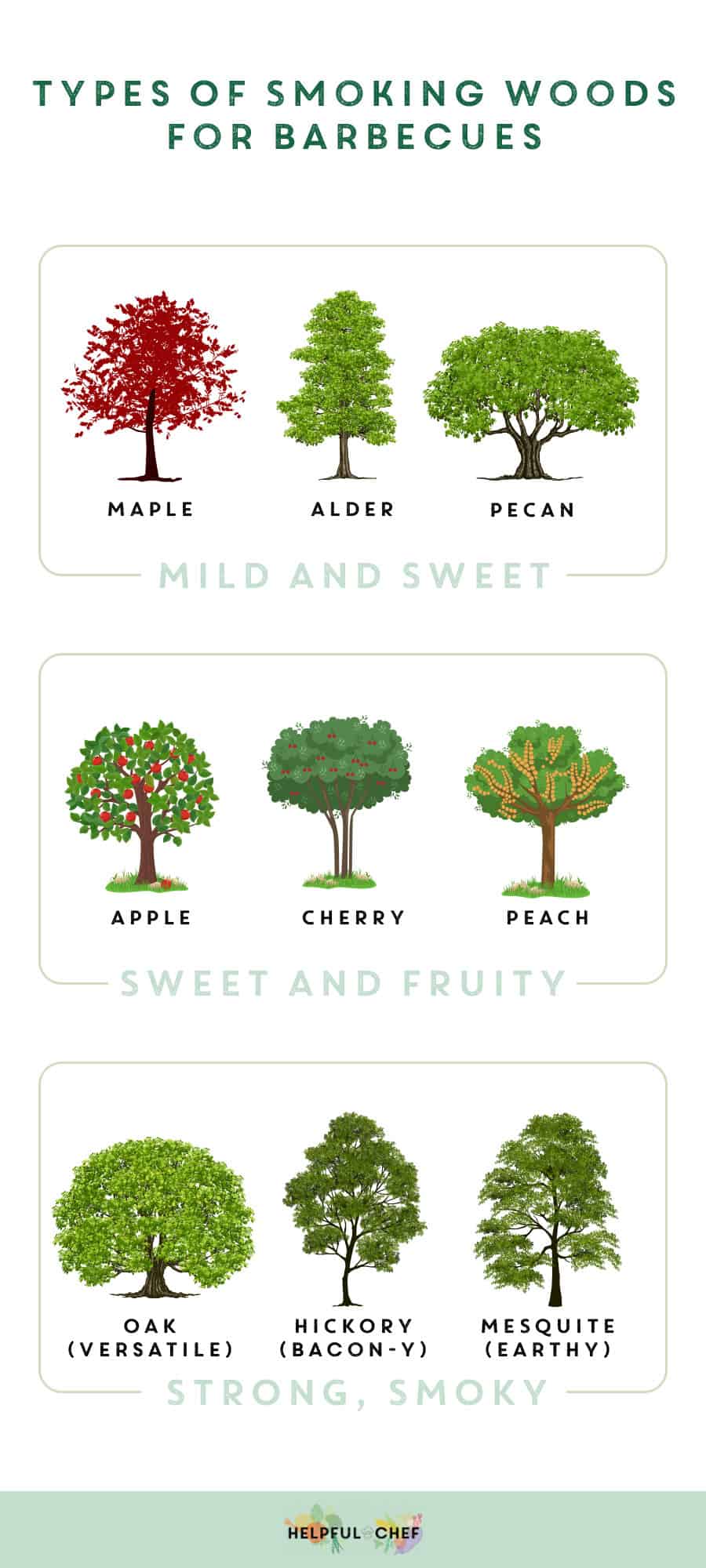
If you’re looking for a mild and sweet smoke, try maple, alder or pecan. Wood from fruit trees, such as apple, cherry and peach will also yield a mild and sweet smoke with fruity notes. For a stronger smoky flavor, you’re better off going for mesquite, which adds some bitterness which can be overpowering if used heavy-handedly, or hickory, which has an almost bacon-y flavor.
As well as trying out different woods, you can try using more or less wood to adjust the amount of smoke, which has a huge effect on the flavor. And once you’re comfortable with which woods you like for different foods, you can start to explore combinations of different woods, to get even more depth of smoky flavor! For example, a bit of hickory with a sweeter or fruitier wood can bring out some sharpness in the smoke.
Summary
So now you know all about smoking, and how to get that characteristic smoky flavor every griller dreams of. Take the time to practice until you’ve perfected your favorite recipes and smoke combinations, and before you know it, your whole grilling game will have leveled up. Don’t be afraid to try new combinations of foods and flavors – who knows, you might stumble upon your own smoking secret recipe. Until next time, happy grilling!
FAQs
Q: How do I know when my food is ready?
A: The only way to accurately check if your food is safe to eat is by taking its internal temperature. If you’re serious about grilling, you’ll want to invest in a dedicated food thermometer, which you can simply stick into your food to take its temperature. You can then check this against our list of internal food temperatures.
Q: My food doesn’t taste smoky enough – what can I do to make it smokier?
A: The first thing we should stress is that no one masters smoking overnight. It takes practice, but be assured that if you keep at it, your smoking skills will improve over time. That said, there are actually a number of reasons for why your food doesn’t taste quite as smoky as you’d like.
A common mistake made by grillers when they start out smoking is that they try to rush things. However, a proper smoke requires patience. Good things come to those who wait! If you think you may have been rushing a little, try to slow things down a bit next time.
Another important smoking concept that can take some time to master is keeping a consistent temperature. An uneven temperature that gets too hot can cook your meat too fast, sealing it and obstructing smoke from entering your meat.
Q: I want to enjoy the smoky flavor but I haven’t got all day! Is there anything I can do?
A: You sound like the sort of person who might be interested in liquid smoke. It’s a liquid with a smoky flavor that can be rubbed onto meats. It’s highly concentrated, so you’ll only need a few drops.
If that doesn’t cut it for you, you might also want to check out smoking guns. You fill them up with woodchips of your choice, and the gun heats them up intil they are smoldering, at which point you can shoot smoke from the nozzle and into a sealed container containing your cooked food. This can impart a more ‘authentic’ smoky flavor in as little as five minutes! Just be sure to only use smoking guns outside, or in a well-ventilated room with open windows and a fan on.
Other than that, you could stick to smoking smaller cuts of meat on your grill or smoker, such as chickens, or try some of the other non-meat recipes, which often take far less time than the larger cuts of meat.
[1] Peter P. Purslow (31 March 2018), ‘Contribution of collagen and connective tissue to cooked meat toughness; some paradigms reviewed’. Accessed at: https://pubmed.ncbi.nlm.nih.gov/29636208/.
[2] Daniel Vaughn (3 February 2016), ‘The Science of the Smoke Ring’. Accessed at: https://www.texasmonthly.com/bbq/the-science-of-the-smoke-ring/.
[3] Kamado Jim (20 September 2014), ‘An Abbreviated History of the Kamado Grill’. Accessed at: http://kamadojim.com/an-abbreviated-history-of-the-kamado-grill/.
[4] Matt Kirouac (date unknown), ‘Chicken Trends: Dark Over White’. Accessed at: https://www.usfoods.com/great-food/food-trends/dark-meat-lights-up-restaurant-dining-trends.html.
[5] Emma Christensen (4 April 2008), ‘Food Science: why you should rest meat after cooking’. Accessed at: https://www.thekitchn.com/food-science-resting-meat-46678.
[6] Dan Gentile (7 March 2017), ‘14 Easy Ways to Improve Your Grilling, According to BBQ Experts’. Accessed at: https://www.thrillist.com/eat/nation/grillist-bbq-pitmaster-grilling-advice.
[7] Dan Gentile (7 March 2017), ‘14 Easy Ways to Improve Your Grilling, According to BBQ Experts’. Accessed at: https://www.thrillist.com/eat/nation/grillist-bbq-pitmaster-grilling-advice.

